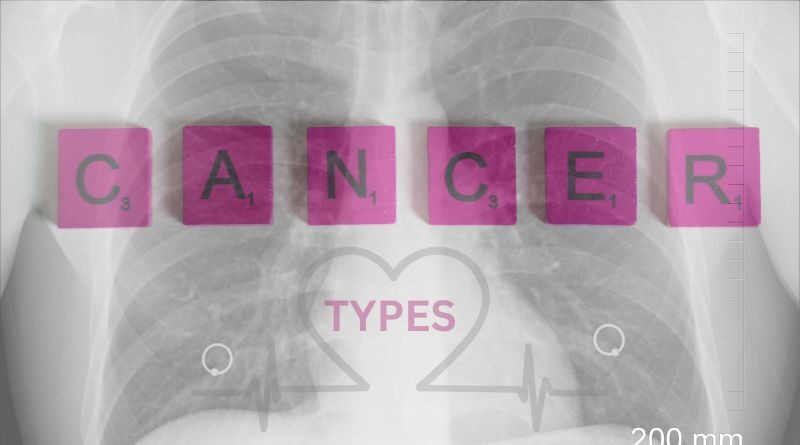Types of Cancer and Symptoms: You Need to Know
Types of Cancer and Symptoms You Need to Know: Since there are more than 100 types of cancer, it’s important to know the major types of cancer and the symptoms associated with each type of cancer so you can detect them as early as possible and begin treatment immediately. This will improve your survival rate from all cancers combined, not just one specific type of cancer. Here are some examples of major types of cancer and their symptoms.
The Most Common Cancers
Cancer is such a scary disease because it’s an illness that can strike anyone, at any time. There are many types of cancer, but the most common type worldwide is breast cancer. Different types of cancer have different symptoms, so if you know what to look for, you’ll be able to catch the disease early. For example, people with lung cancer will cough up blood and they may also suffer from frequent headaches. The key is knowing the signs and symptoms of different types of cancers, in order to get help as soon as possible.
There are more than 200 types of cancer, each one with its own symptoms. Lung cancer, for example, tends to cause pain in your chest as well as coughing up blood. Headaches could be a sign of brain cancer. The seven most common types are breast cancer, lung cancer, prostate cancer, colorectal (bowel) cancer, melanoma (skin) cancer, and kidney or renal cell carcinoma. If you know what signs to look out for when it comes to these most common cancers, you’ll be able to get treatment faster so that you can beat it! The earlier you detect it—and if caught early enough—the better your chances of beating it. So why not use our guide today?
Breast Cancer: 15%
Breast cancer is the most common type of cancer in mostly American women. A common symptom of breast cancer is a lump or mass in one or both breasts. Other symptoms include painless lumps, nipple discharge, nipple retraction, redness, or scaliness on the skin in the breast area. Less common symptoms can be an intermittent fever with chills, night sweats, fatigue, stomach pain that comes and goes at random intervals, and weight loss without changes in diet or exercise habits.
Some women may have a family history of breast cancer, but most women do not. If you have a first-degree relative (mother, sister, or daughter) who had breast cancer before age 50, your chances are slightly higher that you will develop it as well. Keep in mind that being diagnosed with breast cancer doesn’t mean you’ll get it again – many women with a genetic predisposition for breast cancer never develop it. Still, these women should be aware of their risk factors and get regular checkups with their doctor to catch any lumps or bumps early on so they can treat them before they become life-threatening.
Lung and Bronchus Cancer: 13%
Lung cancer is often caused by years of smoking. It is the leading cause of cancer death in both men and women. The most common symptoms are cough, chest pain, frequent lung infections, unintentional weight loss, or loss of appetite. Common signs include hoarseness, unexplained shortness of breath, a new type of wheezing sound (called an adventitious breath sound), coughing up blood, recurrent pneumonia with fever (fever can occur if the cancer cells block part of the airway), persistent headache without other explanation, painless lumps on the neck below your voice box.
Stomach Cancer: 18%
Stomach cancer is the second-most common type of cancer in the world, with over 1.4 million new cases diagnosed each year. It’s most often found in the stomach but can also occur in the intestines or esophagus. In some cases, it can be hard to diagnose because symptoms can vary from person to person. However, when a patient does have these symptoms, they are typical: chronic indigestion or heartburn that doesn’t go away despite changing one’s diet; vomiting blood or bile; difficulty swallowing liquids or solids; nausea and lack of appetite for more than a few weeks at a time.
Brain Tumors and Brain Cancer: 14%
More than 200 types of cancer exist in the United States, but brain tumors are not one of them. Brain cancer is a type of tumor, which occurs when abnormal cells grow uncontrollably on or within brain tissue. There are many different types of brain tumors, including astrocytomas, oligodendrogliomas, and medulloblastomas. Among children aged 5-14 years old with cancer, the most common type is leukemia, followed by leukemia plus a secondary diagnosis with a primary diagnosis other than lymphoma or myeloma. Brain cancers are always malignant (cancerous) because they can form these metastases in other parts of the body where cancer typically spreads to — this means it can easily be diagnosed.
Colon and Rectal Cancer: 10%
Colon cancer is the most common cancer among men and women mostly in the United States. It’s also one of the most preventable types, largely because many cases are diagnosed at a localized stage. But if it spreads, colon cancer can become difficult to treat and life-threatening. At this point, colorectal cancer may start to invade nearby tissues or organs. Sometimes tumors will develop in other parts of the body first before spreading to your colon or rectum.
Prostate Cancer: 9%
Prostate cancer affects men in all ethnic groups, with no racial predilection. Most cases occur in males aged 50 or older but they can also occur in younger males. Post-surgery may be an option for some patients with localized diseases. One recent study showed that a new, minimally invasive procedure called robotic-assisted laparoscopic prostatectomy resulted in excellent outcomes without major complications such as incontinence or impotence. Radical prostatectomy may also be an option for some patients, but requires a longer recovery time than prostatectomy.
Melanoma Skin Cancer: 4%
More than 20,000 Americans are diagnosed with melanoma skin cancer each year. The disease is a type of cancer called non-melanoma skin cancer that occurs in the top layer of your skin’s cells. Non-melanoma skin cancers can be classified into one or more types: basal cell carcinoma, squamous cell carcinoma, and melanoma (otherwise known as malignant melanoma). Malignant Melanomas are more dangerous because they grow into nearby tissues and organs. The sooner this type of cancer is detected, the greater the chance for recovery.
Uterine (Uterus) Corpus Endometrial (Endometrioid): 4%
Uterine Corpus Endometrial cancer is a type of uterine cancer that is most commonly diagnosed in postmenopausal women. These cancers usually start in the lining (endometrium) or muscle layer that covers the inner wall (myometrium) of the uterus. In women, this type accounts for 4% of all uterine cancers. These cancers usually start in the lining (endometrium) or muscle layer that covers the inner wall (myometrium) of the uterus. This type may also develop from endometriosis-type lesions where endometrial tissue grows outside of the uterus like on ovaries, fallopian tubes, pelvic cavity, bladder, bowel, and/or rectum. Signs include vaginal bleeding not related to periods as well as lower abdominal pain with periods.
Non-Hodgkin Lymphoma: 3%
Non-Hodgkin Lymphoma is the fifth most common cancer in the United States. Non-Hodgkin Lymphoma begins in the lymphatic system which consists of organs like the spleen, tonsils, adenoids, appendix, thymus, bone marrow, and more. It affects the lymphocytes (a type of white blood cell) in these organs. Unlike Hodgkin’s disease, non-Hodgkin’s disease usually does not spread outside the body. The cause is unknown but there are many theories including genetics and exposure to viruses or chemicals that may lead to an increased risk of developing this cancer.
For more updates regarding Health & Fitness, keep browsing Blogs Gurru.




